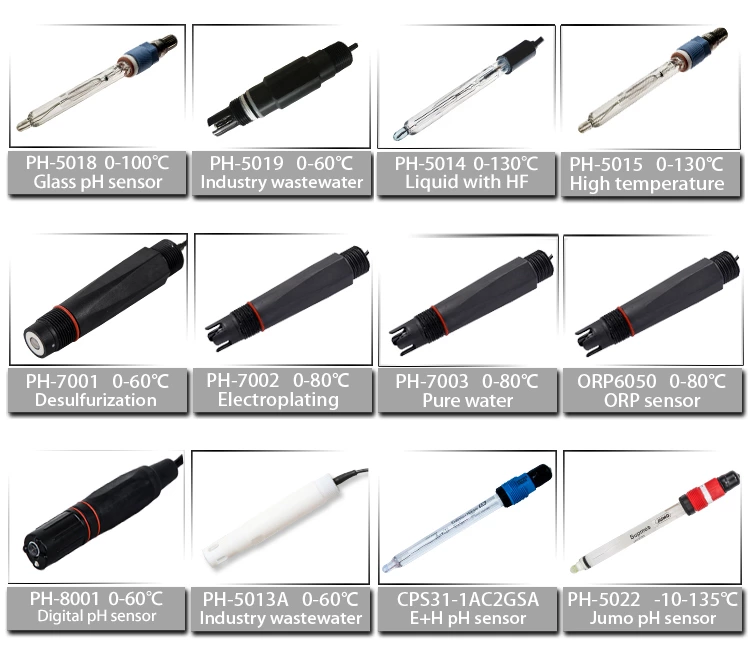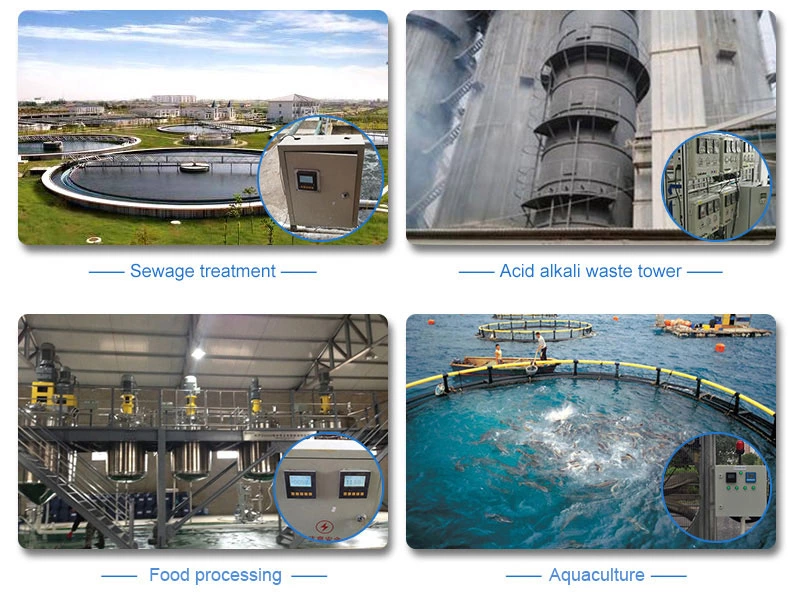What is a pH sensor & How does it work?
PH Sensor: What Is It and How Does It Work?
A pH sensor is an electronic device that measures the level of acidity or alkalinity (pH) in a liquid or solution. The sensor contains a glass electrode that is sensitive to changes in pH. The electrode is made up of a thin membrane that is coated with a special solution containing a reference electrode, which is usually made of silver/silver chloride. When the pH sensor is submerged in a liquid, the hydrogen ions in the liquid interact with the reference electrode, creating an electric charge. This charge is then measured by the sensor and converted into a pH value, which is displayed on a screen or outputted to a data logger.
pH sensors are commonly used in a variety of industries, including water treatment, food and beverage production, and scientific research, to monitor and regulate pH levels in liquids.
What is a pH sensor used for?
A pH sensor is used to measure the level of acidity or alkalinity (pH value) in a liquid or solution. The pH value affects many chemical and biological processes, and therefore pH sensors are widely used in various industries and applications, including:
- Water Treatment: pH sensors are used in water treatment facilities to monitor the pH level of drinking water, wastewater, and industrial process water. The pH value affects the effectiveness of disinfection and the formation of byproducts.
- Agriculture: pH sensors are used to measure the pH value of soil and hydroponic solutions. The pH value affects the nutrient uptake of plants and the growth of crops.
- Food and Beverage Production: pH sensors are used to monitor and control the pH value of food and beverage products, such as cheese, beer, and wine. The pH value affects the taste, texture, and safety of the products.
- Pharmaceutical Industry: pH sensors are used to monitor the pH value of pharmaceutical products, such as drugs and vaccines. The pH value affects the stability and effectiveness of the products.
- Scientific Research: pH sensors are used in various scientific research fields, such as biochemistry, environmental science, and microbiology, to monitor and control pH levels in experiments and processes.
What is a pH sensor for water monitoring?
A pH sensor for water monitoring is a device that is used to measure the pH level of water in real-time or at scheduled intervals. These sensors are typically designed to be submerged in the water and connected to a monitoring system that provides accurate and reliable pH level data.
In water monitoring applications, pH sensors are commonly used to measure the pH level of:
- Drinking Water: pH levels outside of the EPA recommended range of 6.5 to 8.5 can indicate water quality issues that may affect human health.
- Wastewater: pH levels outside of the recommended range of 6.0 to 9.0 can affect the efficiency of water treatment plants and can be harmful to the environment.
- Aquaculture: pH levels outside of the optimal range for specific fish species can be detrimental to fish health, growth, and reproduction.
- Swimming Pools and Spas: pH levels outside of the recommended range of 7.2 to 7.8 can cause irritation to swimmers and damage to pool equipment.
- pH sensors for water monitoring are typically equipped with automatic temperature compensation to ensure accurate readings, and can be calibrated periodically to maintain consistent accuracy.
What is the advantage of pH sensor?
pH sensors have several advantages, including:
High Accuracy: pH sensors provide highly accurate and reliable measurements of pH levels in a given solution.
Non-destructive: It is non-destructive and non-invasive, meaning they do not damage the sample being measured in any way.
Continuous Monitoring: It can provide continuous monitoring of pH levels in a solution, allowing for real-time adjustments and control.
Easy to Use: It is easy to use and require minimal training or expertise to operate.
Wide Range of Applications: pH sensors are widely used in a variety of applications, including environmental monitoring, food and beverage production, pharmaceuticals, and more.
Types of pH Sensors
There are several types of pH sensors, including:
- Glass pH Electrodes: This is the most common type of pH sensor, which consists of a glass membrane that detects changes in the pH level of the solution.
- ISFET pH Sensors: This is a solid-state pH sensor that uses an ion-sensitive field-effect transistor (ISFET) to measure the pH level of a solution.
- Polymer pH Sensors: This is a type of pH sensor that uses a polymer membrane that reacts to changes in the pH level of a solution.
- Differential pH Sensors: This type of pH sensor uses two electrodes to measure the voltage difference between them and determine the pH level of the solution.
- Optical pH Sensors: This is a newer type of pH sensor that uses fluorescent dyes, or indicators to detect changes in the pH level of a solution.
Different Types of pH Sensors For Different Applications
Different types of pH sensors are used for various applications. Here are some examples:
- Glass pH electrodes: These are commonly used in laboratory applications such as water testing, food and beverage, and chemical analysis.
- ISFET pH sensors: These are ideal for applications in which a small sensor is required, such as in medical equipment or monitoring systems.
- Polymer pH sensors: These sensors are used in harsh environments such as wastewater treatment plants, petrochemical and pharmaceutical industries.
- Differential pH sensors: These sensors are used in applications that require high accuracy and precision, such as laboratory analysis or the production of semiconductors.
- Optical pH sensors: These sensors are used in biotechnology, food industry, and medical diagnostics, where the sensors can be integrated into systems for real-time monitoring of pH.
- Miniature pH sensors: These small-sized sensors are used in portable devices, such as pH meters for on-site testing and field applications.
- Wireless pH sensors: These sensors communicate wirelessly and can transmit data to a remote location, making them suitable for remote monitoring of pH levels.
Supmea pH Sensors
Supmea is a manufacturer of various types of pH sensors for industrial applications. Some of their pH sensors include:
SUP-PH5050 high-temperature pH sensor
SUP-PH5014 Hydrofluoric acid pH sensor
Supmea pH sensors are designed to provide accurate and reliable measurements in challenging industrial environments. They have a long service life and are resistant to corrosion, temperature fluctuations and chemical damage.






